
Playa Venao in Full Swing
Playa Venao, Panama’s new tourist paradise, sits at the heart of more than thirty miles of beaches. It is shaping up to be the nation’s prime surfing coast while attracting equal interest from adventurers, young families, and international investors.
By: Margarita de los Rios
Photos: Luis Zamora @luis_zamorav
This morning we rose early to follow Assaf Allouche to a sound healing session at the top of Montaña Mágica (Magic Mountain). Carried away by the deep vibrations of the gong and the melodic words of Kate Edelstein—the healer of Playa Venao—I allow myself to drift into a kind of ecstasy that penetrates my bones and all my senses. The Reactor Venao festival’s iconic wooden structure rises above us while the sun shines in front of us and the day gradually unfolds.
I close my eyes and allow the gong’s 200 Hz vibrations do their thing while I try to embody what my hosts call the “Venao spirit”: a kind of free soul that combines the 60s hippie, the 80s yuppie, and the entrepreneur of the 2000s. This way of being has evolved in Venao alongside an increasingly broad community of expats (mostly between the ages of thirty and fifty) and a budding group of Panamanians who have chosen this place as their home.

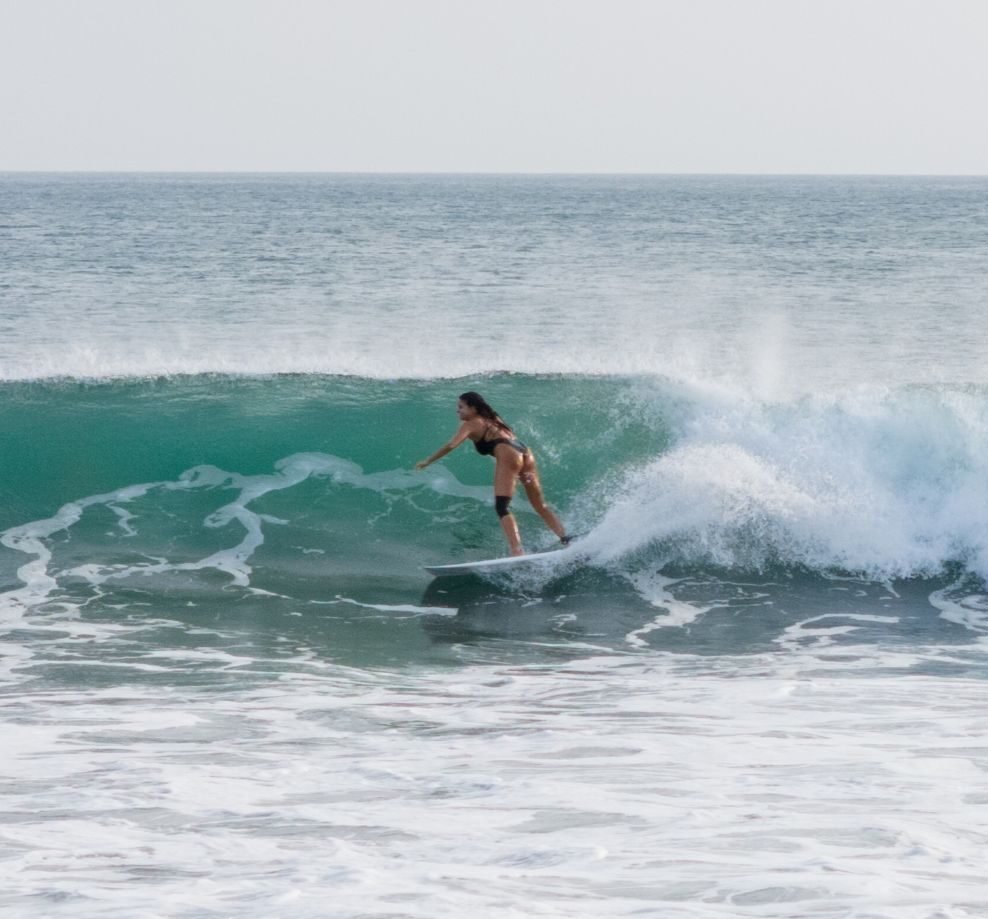
Twenty years ago, Playa Venao was just a beach with the best surfing in the region. Most of the surrounding land belonged to a cattle rancher, but the beach was visited by adventurers who started to spread the word among surfing enthusiasts, describing its long, constant waves, year-round warmth, and the sandy bottom. The waves are amazingly powerful on one side of the beach––ideal for professionals––and soft and gentle on the other—just right for beginners.
In Venao, expats and a budding group of locals have formed a community of friends.
As the surfers who first visited grew older and started to acquire their own capital, they wanted to settle near the beach and the cattle rancher decided to sell them the land. The first investors were interested only in profits, but then the real settlers arrived with their families tow. There wasn’t a gas station or bank in sight, much less a school or a hospital. And they literally plowed the desert.
Among them was Assaf Allouche, our leader this morning, who owns the most famous spot on the beach: El Sitio. Allouche is also the creator of Reactor Venao, a three-week party held once a year that draws young people from around the world who come to experience the magic of electronic music from thirty guest DJs.
El Sitio has become the most famous spot on the beach; it is home to the Reactor Venao festival, a massive three-week party.

Yoga, meditation, and sound healing sessions take place during the party thanks to the sanctuary-like atmosphere created by the community to foster emotional equilibrium. Flow yoga with animals is offered, as are Kundalini, Hatha, and aerial yoga sessions. According to self-declared “ambassador of Venao,” Eryka Hordsyshava, an expat community member with great love for this land, “This is a place where your soul can rest, your body can rejuvenate, and your creativity can flow.”

Among Venao’s most active developers is Ilan Shatz, who is committed to making Venao a place where Panamanians want to put down roots, have children, and run their businesses. This goal has made him one of the driving forces behind the new school and a clinic where different specialists take turns attending. “I like surfing and biking, and I want to continue doing these things,” says Shatz, which is why he chose to live and invest in an area like Venao. That’s also why he plans to promote a free trade zone to attract technology companies that produce knowledge for export.

The Creator Center, a new school that has the same director and international curriculum as Playa Buenaventura, opened just a few months ago and already has more than fifty students. Daniel Moreinis, president of the Pedasí Chamber of Tourism and an investor in Playa Venao, explains that Venao has experienced a second boom since the pandemic. Many families spent the quarantine in the area and decided to stay, and a new wave of investors also arrived, bringing their own energy to the area.
Ilan Shatz is an entrepreneur determined to make Playa Venao a place where Panamanians want to put down roots, have children, and run their businesses.
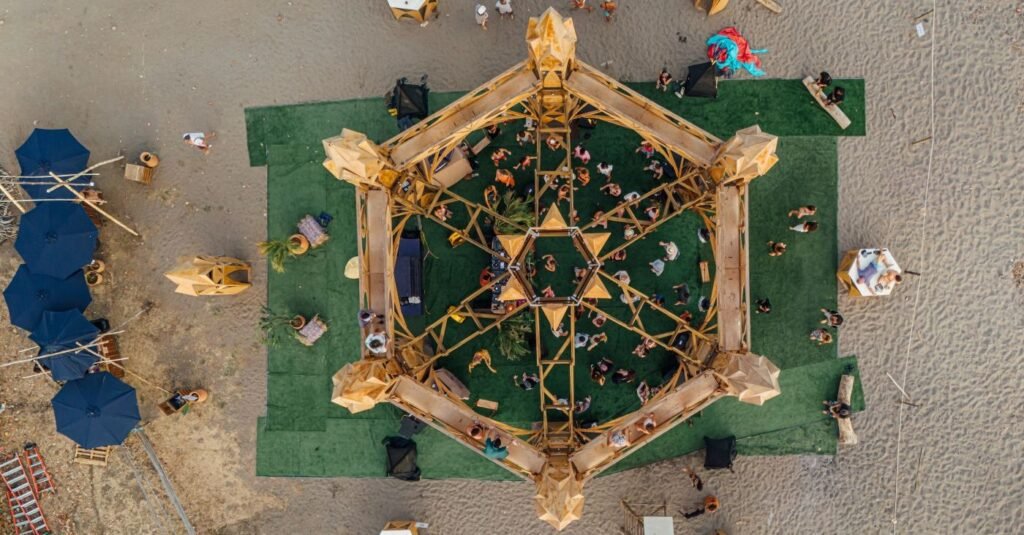

Among the pioneers developing projects and committing to helping Venao move forward are Adi Shlush and Michael Rudasevski, founders of Selina, a famous hostel brand known worldwide. Michael is currently promoting his Blue Venao project, a residential development that includes houses, apartments, and a beachfront hotel. According to Michael, “No one in the world says ‘I want to go live in Venao,’ but they come here on vacation and end up wanting to stay. Everyone wants to be part of what’s happening.”
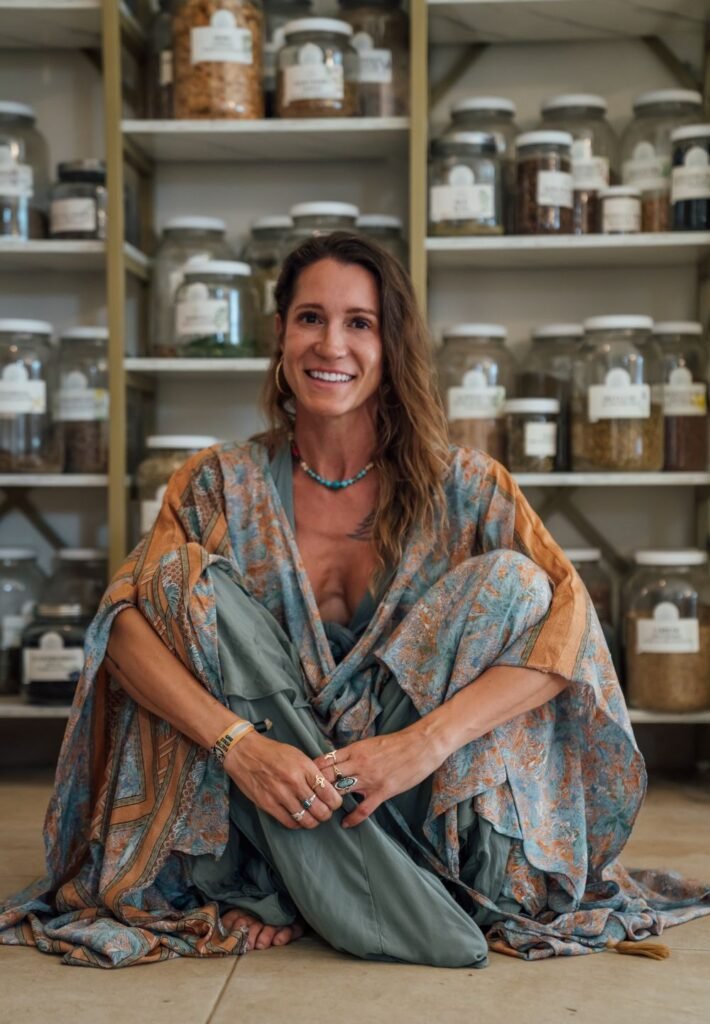
El Sitio has become the most famous spot on the beach; it is home to the Reactor Venao festival, a massive three-week party.

Sebastián Comte is very young. He arrived with his brothers just a few years ago, during Venao’s second boom, and together they developed the Alaya retreat hotel. He tells us that they visited all of Panama, but chose Venao because of the special quality of its community. The hotel, Panama’s first luxury glamping site, was designed with sustainability in mind; the hotel restaurant doesn’t import ingredients from outside the area, instead remaining true to “the idea of creating a circular economy, which is why we buy our meat in Las Tablas and our fish directly from the fishermen.” Comte’s wife is a yoga instructor and a key promoter of wellness practices in the region.
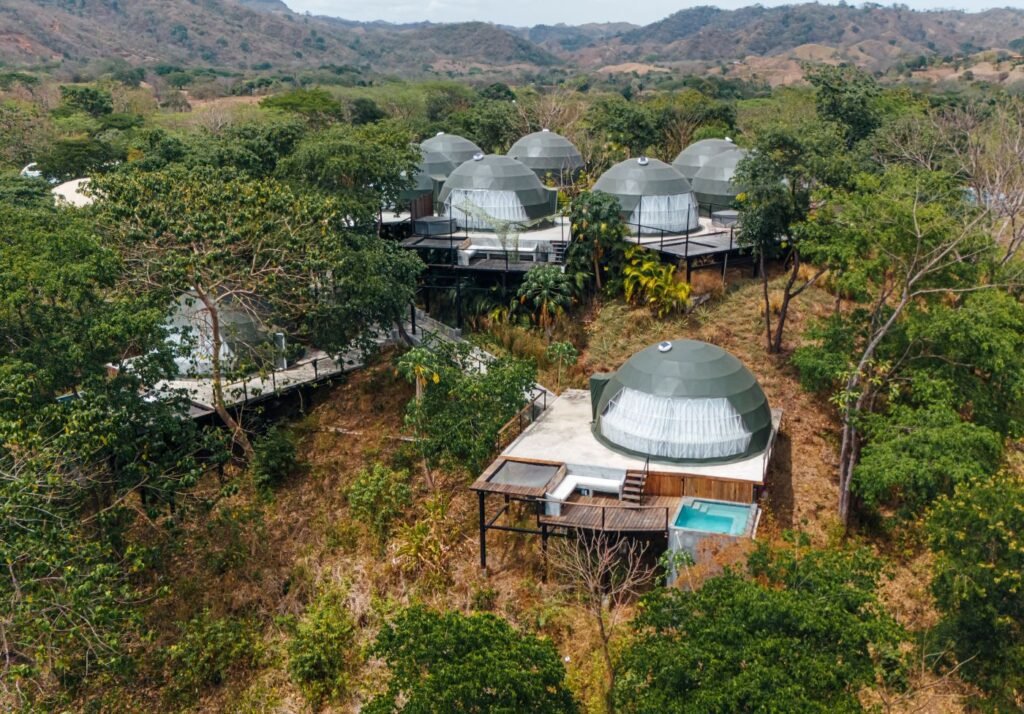
Tuira Torrijos came to Venao because she was in love with Chef Andrés Morataya, who enjoyed unprecedented success with his Panga restaurant in Pedasí. The restaurant closed during the pandemic, but Tuira, benefiting from Venao’s second boom, is now representing the Wao brand, which has incorporated recycled shipping containers into the architectural design of its four new developments, including one hotel on the beach and another––Jungle Venao––just steps away, as well as the Manglares school, which was the first in the area and offers an international curriculum.
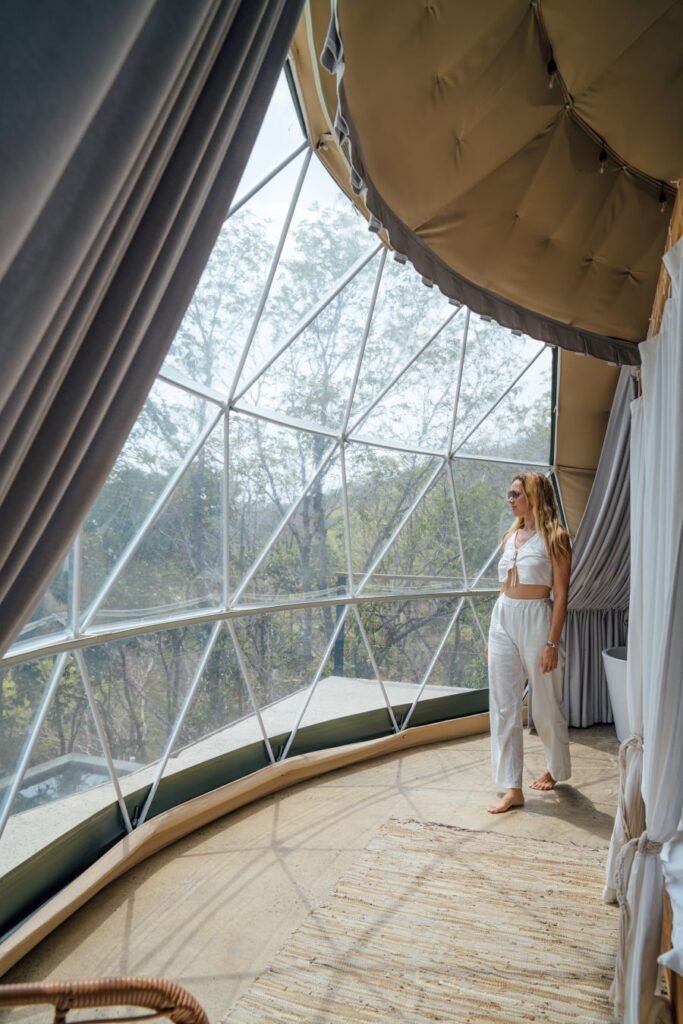
Elad Asiag is another entrepreneur who chose to stay in Venao. He arrived in 2008 and met Maya Tavares a few years later, while she was whale-watching on vacation in Venao. They fell in love, got married, and are now designing an event center on the property they adapted for their wedding, where there will also be a wave pool. They also developed the paddle tennis courts that are already operational and will become the heart of an open-air shopping center, which will also have trails and plenty of shade. “We’re in love with this place and we want it to grow beautifully,” says Maya.

Also for Environmentalists

Not everything that shines in Venao is a modern hotel or a housing development. At the top of the hill, Caroline Howell works from dawn to dusk to restore the area’s tropical dry forest, which had been devastated by intensive livestock farming and traditional slash-and-burn farming techniques that depleted the land. Together with philanthropist Omani Carlson, Howell created Canopy Venao, which is now working in collaboration with Pro-Eco Azuero to restore the Cerro Hoya forest corridor—covering nearly 20,000 hectares—to save the habitat of the Azuero spider monkey, an endangered endemic species. They’ve already planted 25,000 trees, focusing on 76 native species, with the help of some 250 volunteers from ten different countries. But the Canopy Venao project extends even further to focus on transitioning to more sustainable agricultural techniques in the area as well as implementing regenerative reforestation and agriculture to improve water retention and ensure more resources for future generations. “With a little investment and a lot of effort, it’s possible to make big changes,” says Caroline.
Eco Venao
Part tourist accommodation and part environmental initiative, Eco Venao is a reforestation project being carried out on 345 acres. It seeks to restore the already scarce and nearly extinct tropical dry forest biome. Over the past fifteen years, the Eco Venao project has reforested more than 75 acres of land, planting more than 50,000 trees. Eco Venao is also a tourist development with oceanfront cabins and a nursery where turtle eggs are kept safe until the hatchlings can be released, a very popular activity among tourists. Venao brings it all together: beaches, yoga, medicinal herbs, excellent accommodations, very good food, ecotourism, and a contagious free spirit.

What to do in Venao
Surf Lessons
Kahuna Surf, El Sitio.
@kahubavenao
Yoga Classes
Check the calendar: https://venaoguide.com
Medicinal herbs and sound healing shop
@serprana, cell. 6565 2565. 6565 2565.
Fishing
@playavenaofishing
Turtle watching
https://tortugasplayavenao.com
Where to Eat
Recommendations from Erika Green.
Cafeteria: Tapas and improvisations by Chef Eric
Hummuseria: The best hummus
El Sitio: Sunset DJ sets
Selina River: Offers many vegan options
La Quincha’s: Gourmet Spanish-Panamanian cuisine
Wao Venao, Motek: Sweets, ice cream, and coffee
Hotel Alaya: Exquisite food in an unbeatable setting for a luxurious dinner
Ruben: Indoor dining overlooking the sea


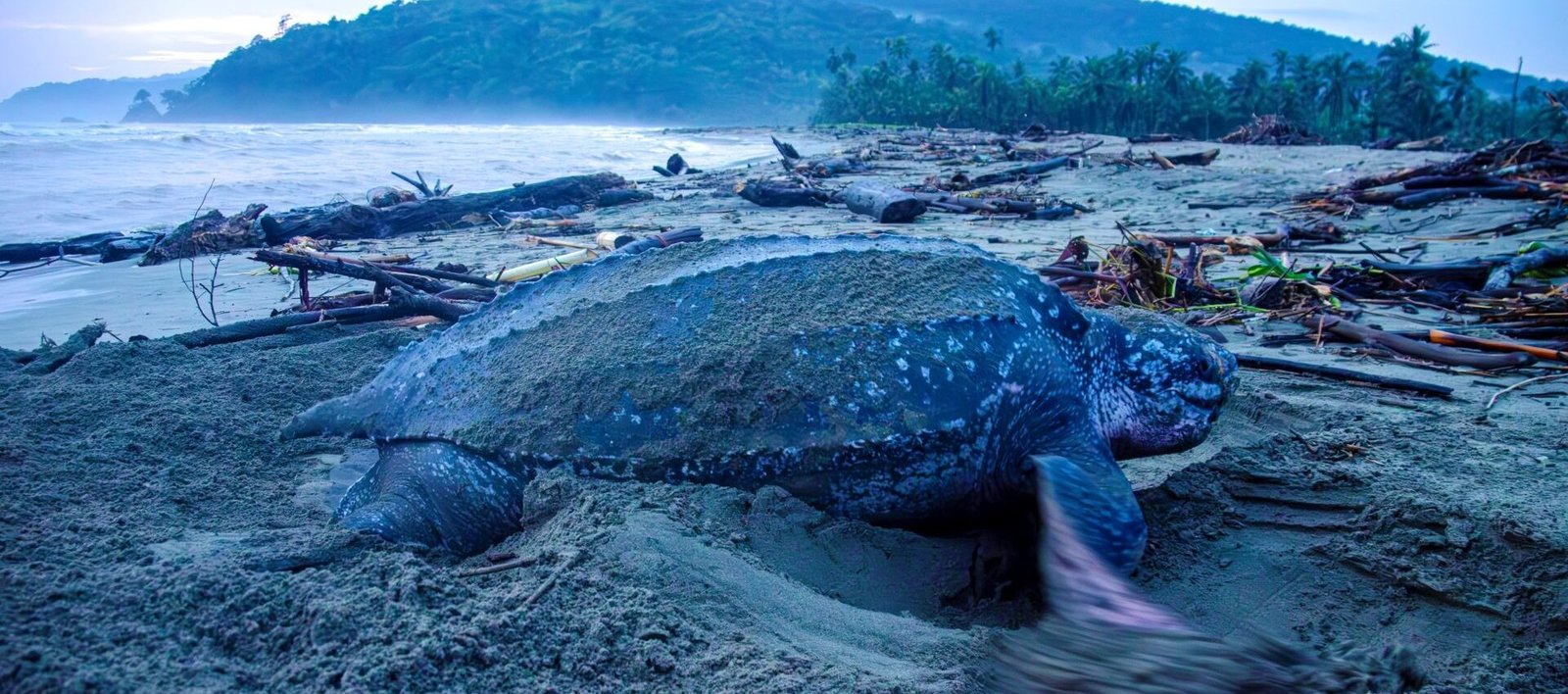
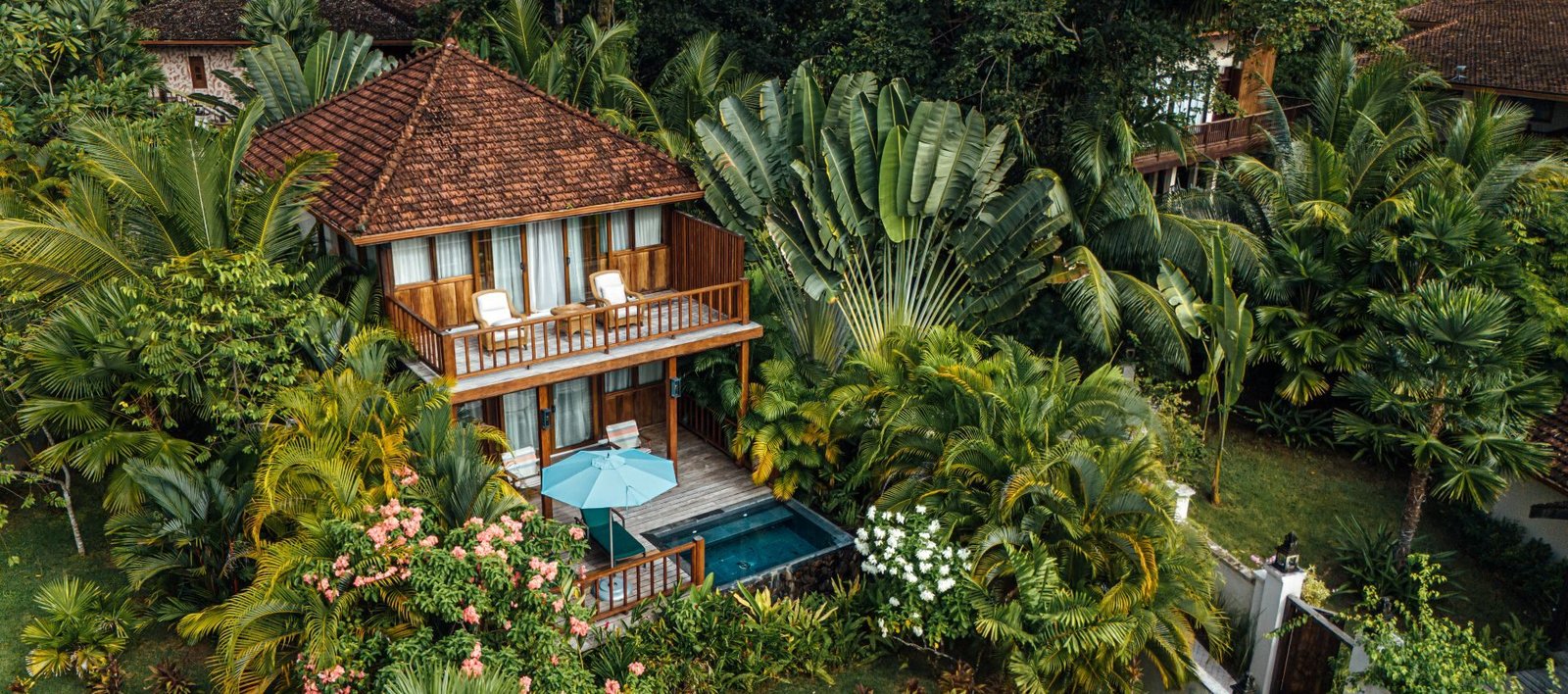
Leave a Reply